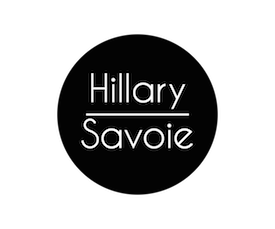Like Audrey Hepburn, I believe in pink. Rather, I should say I now believe in pink. I haven’t always, but my daughter Esmé taught me to love the color pink.
As an expectant mother I prepared my daughter’s nursery without a hint of pink. My dismay at the flood of blush baby shower gifts, pink for the expected girl, now seems so trivial. Of course I loved my soon-to-be daughter, but I was so absorbed with planning for who I thought she would be—a tough, precocious, tom-boy—that I failed to see the importance of pink.
When Esmé was born she was anything but pink. Mostly she was gray. The flood of specialists didn’t know what was wrong—reflux, hypotonia, failure to thrive—we heard it all over her first three and a half months. There were specialists and more specialists ordering studies and tests, but still no answers to our increasingly urgent questions. And so Esmé slid below all the lines on the growth chart, occasionally just about kissing the 5th percentile curve. She missed the milestones for holding her head, lifting toys, and vocalizing. She was so pale, so gray, that my husband and my anemic winter complexions appeared sun-kissed next to her skin.
We saw the excruciating looks of concern, from strangers and family alike. We knew what people meant when they said “You said, she is how old?” I dreaded these questions. I recall answering one woman, telling her that Esmé was six weeks old, and she mumbled, “…more like six days.”
But, Esmé smiled. She smiled even though smiling made her vomit. She also tracked. We hit those milestones early, in fact. She knew her Maman and her Papa, never letting us out of her sight as we moved across the room. My husband and I shrugged off our old type-A obsession with deadlines and celebrated the milestones she did hit, when she hit them…and ignored the rest of them. To us, Esmé was perfect—gray or not.
But on some level I knew that day was coming.
She sputtered and gasped whenever she ate—shifting color from her pearly tone, to an unspeakable dappled green-gray. She refluxed and vomited at such astonishing rates that I almost never put her down—since she could not turn her head, I feared she would choke before I could reach her. She perpetually sounded as if she was purring—breathing through the dusky liquid in her lungs and the back of her throat.
At night we set alarms every few hours to wake her to eat. We prayed she would take at least an ounce. When she did, she would convulse in pain afterward, swinging her arms and sweating through her clothes and my own.
Other mothers complained about the teaspoon of spit-up dripping on the chins of their plump apple-cheeked cherubs—I bit my lip, wondering whether they could see that my girl struggled for every breath, silent, determined, yet, despite her pain, smiling.
The day Esmé turned blue in my arms remains a blur. It folds over in my mind, a series of hazy sensations.
Humming to calm her: “…brave as a bear with a heart rare and true…Sweet Esmé”
Her retching echoing in the coffee shop, a cascade of coffee beans hitting a roaster.
Hot curious stares of strangers…no offers of help.
The moment my sister joined us…the shutter of relief when I heard her voice, “Hill, are you guys okay?”
The chipper voice of the pediatrician’s nurse, “Oh, she must just have the flu.”
The croak from the back of my throat toward my sister: “drive.”
I still feel the prickling of my skin as I stood in the ER reception, tears streaming down my face, unable to speak, but trying somehow to cling to some semblance of social protocol by producing a request, a name, a need. Did I produce the word “blue”? Did I? I see one receptionist standing as as if in slow motion at the sight of my face. Then running to get a nurse.
For awhile it was all silence. Inaudible screams caught in my diaphragm as I watched my daughter turned over, suctioned, poked, and belted as though she were a rag doll in the hands of the doctors and nurses. I nodded to questions I did not hear, looking passed the chaos, never loosing sight of my girl.
I do vividly remember watching her oxygen numbers drop: 82%, 76%, 58%. At 24% they made us leave her. Pushed out of the room, then from the hall into “family room”—the room used as a buffer for the moments of life and death—muffled sobs propelled themselves out of my body. If my child was to leave this world, I wanted to be there with her.
The day Esmé turned blue, grey seemed like a distant memory. Grey seemed like a blessing.
Blue brought us chest compressions, cardiac and respiratory arrest. Blue brought transfer to a Pediatric ICU and one week on a ventilator. My husband and I lived in the ICU—in what amounted to a two-week long day.
It was an abyss, a vacuum that consumed all color. Esmé was no longer grey, no longer blue, but rather something translucent, barely there, as if she were about to be transported through time.
In this breathless fear we worked toward weaning our girl from the ventilator. With Esmé the smallest feats have always been celebrated…the smallest movement was her victory over gravity. However, here we celebrated the micro-achievement: A little less oxygen, a little less suctioning. We learned terms like her PEEP and PAP—and quickly forgot the whole world did not communicate in such language. We stood in rounds every morning.
We held her tiny hands, as they lay limp beside her.
We had no idea whether the cheerful little girl we knew—the girl who smiled despite intense pain, the girl who laughed every time we reached the page in her favorite book: “bees buzz, buzz, buzzing,” the girl who beamed back at every light—whether that girl still existed at all. Was she there? Could she hear us? Would she ever smile again? We couldn’t ask each other these questions, but we knew they were there.
Then, on the fourth day, there was light. We walked into her room after speaking with her doctor. Esmé opened her eyes, and saw us. Her lips wrapped a grin around the top of the ventilator tube. Her eyes glowed with unadulterated joy. She smiled again, again, and again. She wanted to be certain we received her message: Our Ezzy was here.
A few days later she was extubated and we were able at last to hold her. It was just in time for my first Mother’s Day. A Mother’s Day in the PICU is not the day I had imagined, but I was overjoyed: Esmé managed another weak smile that day—her first Mother’s Day gift to me.
When she still could not digest the smallest amounts of food through a temporary feeding tube, we needed the surgery for an abdominal feeding tube and a nissen fundoplication, a tightening of her esophageal sphincter, in order to prevent her from aspirating food on the way down and on the way back up. Leaving her in the hands of the surgeon was unspeakably difficult.
Waiting was even worse.
Afterward, in recovery, I saw another vision of my daughter. She was weak and struggling against pain. But she was radiant…and pink.
Three months later our girl is plump. She breathes clearly. And she is pink—rosy, in fact. People complement us on her complexion. People say, “Oh what a beautiful healthy baby.” And I beam.
She still is exclusively tube fed. She still struggles to hold her head. She still doesn’t babble or chuckle. We still don’t understand why this has happened to her. We still don’t know what the future holds for Esmé.
What I do know is that Esmé smiles often. She loves her giraffe, Peggy, and her ladybug balloon, Mr. Lady. She is a passionate dancer, swinging her dimpled legs to the beat of Beethoven, Dr. Dre, and Paul Simon. She is curious, joyful, and determined.
Esmé has taught me many lessons in her short life. Perhaps the biggest one is joy of pink. It is not the color of the demure or the naïve. It is steady, it is joyful, it is true. It is the flood of clothes she has grown out of and into, clothes I thought she might never wear. Pink, mauve, peach…
Pink is the color of breathing in and out, in and out.
It is the color of triumph. I believe in pink.


The emotions of those days are some you will never forget. I know how difficult they can be. Ez is a beautiful and strong girl – always remember that.